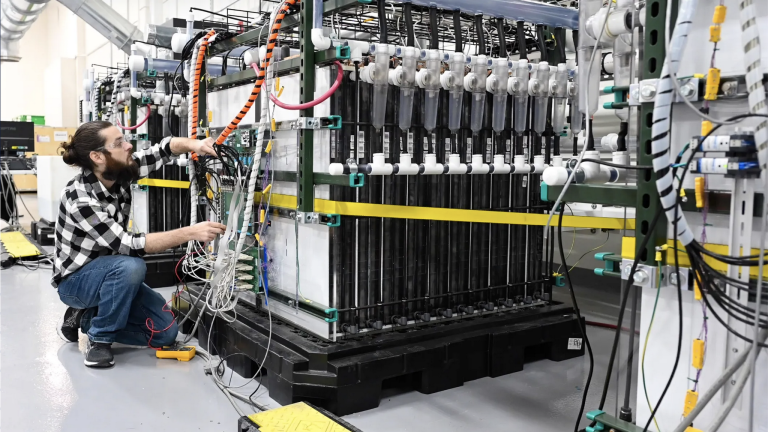
Photo Credit
Form Energy
Form Energy is building a new type of battery made with some of the most common materials on the planet: iron, air, and water.
Solar panels and wind turbines provide more of the electricity that courses through the grid with each passing year. But there are still stretches where the sun isn’t shining and the wind isn’t blowing, and energy storage is becoming crucial for filling in those gaps.
Form Energy uses an iron-air chemistry in its batteries: as they store energy, the iron combines with oxygen, converting to rust. As energy discharges, the reverse reaction happens, regenerating the iron metal and oxygen.






